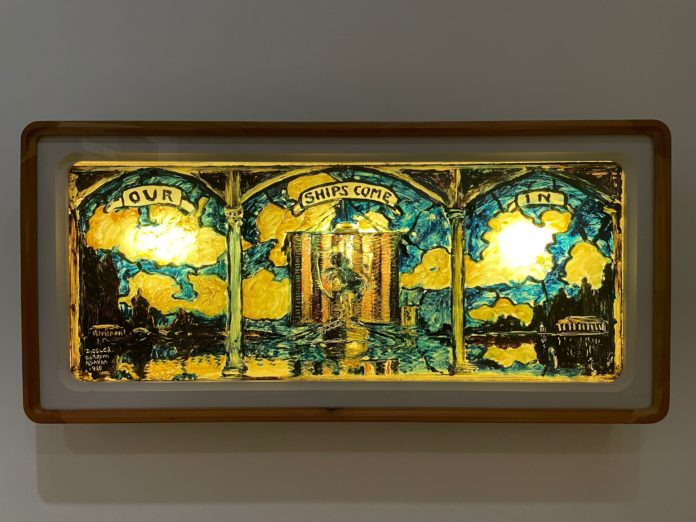
Recently the Cordova Times editor, Elin Johnson, had an opportunity to visit the Frye Art Museum in Seattle and shared this Eustace Ziegler art that was at one time the actual windows in his home on Fourth Street. This inspired us to spend a little time on this special artist that once called Cordova home.
Better than any other artist Eustace Paul Ziegler (1881-1969) captured the spirit of the early twentieth century Alaskan frontier. Arriving in Cordova in January of 1909 to operate the Red Dragon, an Episcopal mission in our mining and railroad boom town, the young missionary quickly became known for his paintings of the people on the northern frontier. Paintings that included Native Alaskans, priests, miners, trappers, fishermen, and others living the rough but thrilling life of the still-new territory.
Born in Detroit on July 24,1881, Ziegler was one of four sons of an Episcopal minister. His parents were the Reverend Paul Ziegler and Mary Frances Bell Ziegler. His father was rector of the Mariner’s Church in Detroit for 27 years, beginning in 1883, as well as the head of an Episcopal school for boys which was attended by Eustace and his three brothers.
Though he would, like his brothers, eventually be ordained to that ministry as well, he was attracted to art from an early age – as early as the age of seven.
An early article on him in the American Magazine of Art reports that his father’s one condition in accepting the idea of Eustace pursuing art was that Eustace be able to make a living at the work. Whether this onus was laid on him literally or was simply ingrained in his rearing, the fact that he felt it is clear in the choices he made throughout the rest of his life. It was an admonition that the young artist took to heart immediately and never abandoned.
The determination to make a living at his work and to provide for a family would be one of Ziegler’s most steadfast and most salient characteristics. In his later years newspaper accounts with titles like “Ziegler, An Artist Who Eats Regularly,” and “He ‘Digs Gold’ With a Paintbrush” would focus on his work ethic. Numerous articles detail the “regular office hours” he kept in his downtown Seattle studio.
How did Ziegler come to Alaska? Join us next week for more!





